We're Obsessed With Dark and Moody Design—4 Trends You Should Know
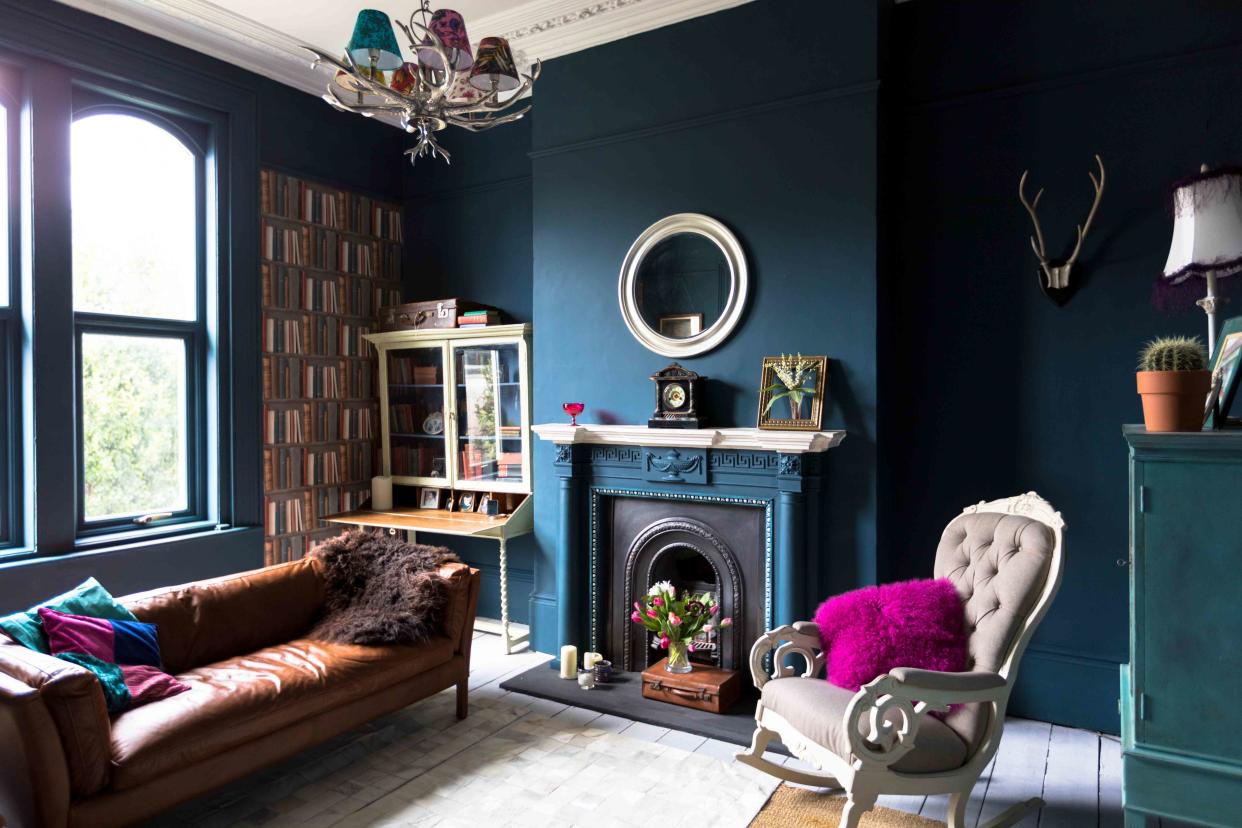
nicolamargaret / Getty Images
Have a penchant for the dark side? Well, the modern world of interiors certainly does. Thanks in part to the internet, and the natural ebb and flow of design trends, moody hues are trickling into the zeitgeist.
It started with Dark Academia, a fantasy-meets-aesthetic that romanticized old-timey books and dark-dipped walls. Further trends like Dark Americana soon followed in tow, gaining popularity on TikTok and Instagram. Other designs are timeless but are seeing a modern resurgence—namely, Gothic style and warmer versions of Art Deco.
Regardless, one thing is clear: a shadow is being cast on our feeds—and it’s not a bad omen. It’s more like the sun setting and revealing a starry night sky. To help differentiate all of these styles, we’ve created a moody design guide below, outlining the characteristics of each and offering expert tips for how to achieve the look in your own home.
Dark Academia
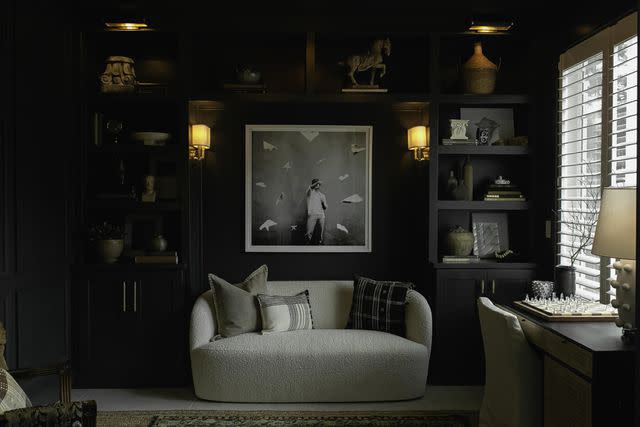
Starting as a subculture on the internet, Dark Academia quickly took TikTok by storm. The aesthetic is inspired by gothic architecture, libraries, tweed outfits, and preppy nostalgia. Think: a romanticized version of boarding schools—like Hogwarts meets Oxford University.
“While there are a lot of moody trends and styles right now in the design world, I am here for Dark Academia all day long, in part I think because it reminds me of a lot of the historic homes I grew up visiting in my hometown of Savannah,” Nancy Barnett, principal and founder of Nancy Lane Interior notes.
The key to achieving the look? Lots of antique decor and literary accents.
“Imagine if you will, the feeling of walking into the library of an old gothic mansion where it's deep and broody but warm and inviting—a place to escape and relax any time of day, surrounded by a dark moody color palette, rich fabrics, worn leather, intricate details, and loads of vintage books and accessories,” Barnett says.
Ambient, warm lighting, and a deep-toned bookshelf can also help set the ambiance. The result should end up feeling somewhat mysterious yet also cozy.
Dark Americana
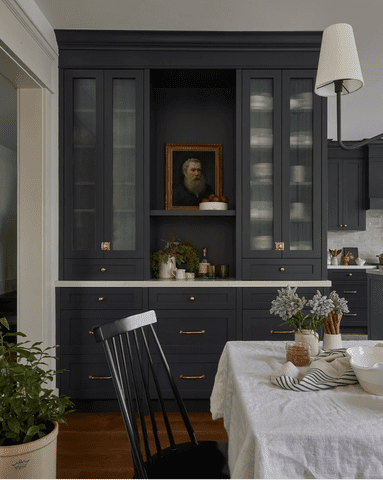
Dark Americana style gained popularity in interiors more recently this year, although it’s been a popular 1950s-inspired subgenre in fashion for years. It’s similar to Dark Academia in that it emphasizes a moody color scheme and vintage pieces. However, it’s more kitschy and specific in leaning into rustic Americana motifs—hence the name.
Classic patterns like plaid, stripes, and gingham are replete in this aesthetic—whether in tablecloths or curtains. Heirloom artwork, graphic prints, and nostalgic signage are also welcome accessories.
“While Dark Academia-style rooms are laden heavy with books and cozy, overstuffed upholstered furniture, Dark Americana contains more traditionally simple furniture—think: Shaker [style seats and] warm woods,” Barnett adds. “Also, think less is more when it comes to detail and intricacies of Dark Americana rooms.”
Still, a high level of craftsmanship is quintessential to Dark Americana, whether it’s Windsor chairs, detailed trim, or paneled walls. Just make sure to ditch the red, white, and blue palette for deeper tones like navy, charcoal, and olive green.
Gothic Style
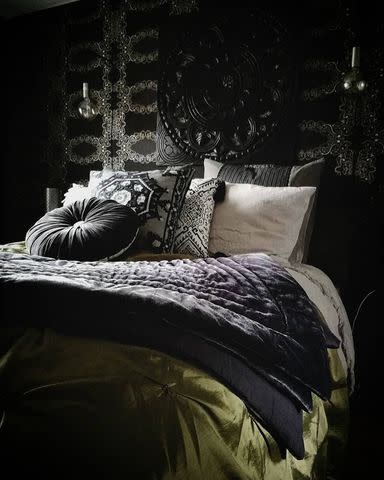
@helena_specht_ / Instagram
More of a maximalist? Gothic style should be right up your alley. “[It’s] completely opposite to [Dark Americana’s simple furniture]—where you have layer upon layer of intricate design and ornate details galore, is the epitome of Gothic style.”
Motifs like vaulted arches and large stained glass windows are staples of this time-tested design. Elements that bring in drama are also key, whether elaborate fireplaces, intricate chandeliers, or porcelain decor.
Fabrics lean opulent, with velvet, satin, and silk swathing Gothic-style spaces. Color palettes stay in theme—so make sure to include rich hues like ruby, gold, and purple to accent black base tones.
As for furnishings, the more detail the better. Often, cabinets, headboards, or chairs will have their edges adorned with elegant spires—another common Gothic motif.
If all this feels a little too heavy, whimsigoth might be more up your alley. It is an ethereal variation of Gothic style that the internet has taken a liking to, incorporating airier elements like plants, apothecary decor, and florals to soften up traditional Gothic style.
Art Deco
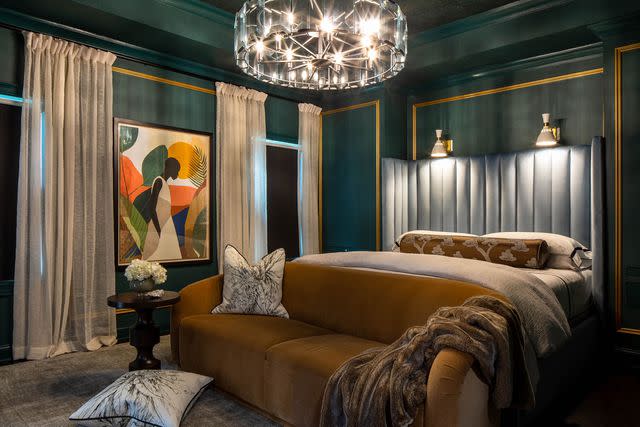
Art Deco isn’t necessarily a moody style per se, but warmer versions of the design have started proliferating on the internet. Classic elements of the style, like chevron lines, sunburst decor, and bold patterns remain present. Metallic accents (especially gold) and statement lighting are also essential.
It’s just about amping it up with a heftier dose of the decadent colors Art Deco already includes—namely, jewel tones like sapphire and emerald with a fearless base of black. Sumptuous materials like velvet and leather add to the opulence, making the style right at home with its moody style counterparts.
What Is Moody Design?
The aforementioned styles all fall under the umbrella of moody design. So, what exactly does that entail? Here are the basic principles of moody design, according to Barnett:
Incorporate opulent fabrics like velvets, cashmere, mohair, flannel and wool.
Feature rich color palettes including dark greens, grapes, deep moody blues, and blacks.
Pattern is welcome in droves—think: tweed, plaid, and checker prints whether on wallpaper, textiles, or tiling.
Atmospheric lighting sets the mood. Opt for warm light at a color temperature below 3300 Kelvin to create a cozy ambiance, along with softer illumination through materials like frosted glass or heavier lamp shades.
Read the original article on The Spruce.

